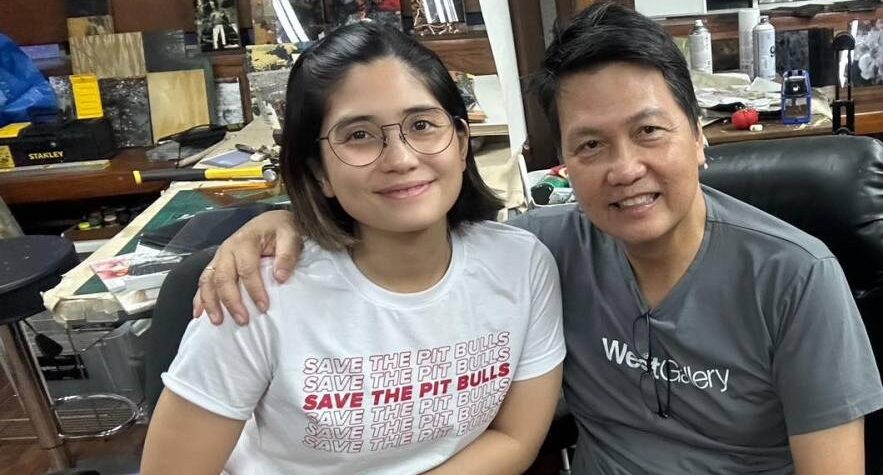JAKARTA — Works of art are indeed best viewed at some distance, but the virtual museum tour we currently have because of the COVID-19 pandemic has not been a satisfying alternative to enjoying each of a collection’s pieces.
In Jakarta, several museums run by the city administration, such as the Taman Prasasti (Memorial Stone or Inscription Park) Museum, the Maritime Museum, the Textile Museum and the Betawi Cultural Village, have started to open their doors to the public with some restrictions applied.
Overall, Jakarta has over 70 museums, including private-owned or managed by other government institutions.
The government-run National Gallery of Indonesia has also put health measures in place before reopening in the coming week, with the safety of the collections, museum employees and visitors in mind.
The busiest museum located at the heart of the capital city hopes to welcome visitors back after closing on March 17 but with limited access.
It will only reopen its free-admission Permanent Exhibition hall on the second floor of B Building, which displays state collections to represent the history of arts development in Indonesia.
“We will apply the standard health protocols for visitors and staffers,” museum director Pustanto said during a live public discussion streamed on YouTube on May 28.

In an episode titled “Treating Art Collections Amid the Pandemic”, a part of the Bicara Rupa discussion series, the gallery’s conservators shared their strategy and measures to keep both the collections and visitors safe during the global health crisis.
Masks, he said, would be compulsory with tight monitoring of physical distancing rules.
The museum will limit the number of visitors in one room at the same time and replace on-site ticket purchases with an e-ticketing system to avoid lines and prevent physical contact.
The gallery has also installed sinks around the compound for visitors to wash their hands and have their temperature checked before entering buildings and setting up protocols for visitors while using restrooms.
The gallery’s management even considered placing plastic shields at the receptionist desk and — as requested by many participants in the public discussion — glass covers for the art collections.
“We are doing everything we can — as long as the budget allows it. In the meantime, the important thing is to disseminate the information to the public and to communicate the agreed practices to visitors,” Pustanto said.
“There will be new norms to adopt as we appreciate the artwork in this new way of living, in a different set of rules.”

Considering the habit of Indonesian museum visitors, there is still a long way to go before galleries can create a “no-touch” experience, but the pandemic might expedite it, he added.
National Gallery conservator Jarot Mahendra said that art collections in the museum could be a medium for the spread of the disease.
“The [novel coronavirus] could be brought in by an infected person who interacts with the art collections and [that can] infect other people,” he said at the public discussion.
Although there is no completed research on how long the virus can survive on inanimate objects, Jarot said he had looked into research conducted on the Severe Acute Respiratory Syndrome (SARS) and Middle Eastern Respiratory Syndrome (MERS).
“As we protect art collections that are sensitive to the exposure of sunlight and humidity, we keep them in display rooms or storage rooms with minimum ventilation and controlled temperatures, which actually be a breeding ground for viruses,” he said.
“Therefore, we carried out preventive measures by cleaning and sterilizing the rooms and the collections on a regular basis.”
In the hope that other museums, gallery owners and private collectors will follow suit, he said that the National Gallery’s preventive measures had proven effective in maintaining the artworks’ condition in the past two months.
Using research from the Canadian Conservation Institute, the Library of Congress and the World Health Organization as references, Jarot said not all materials used in disinfectants were safe for art collections.
“It is not safe to use hand sanitizing liquid before touching a paper-based art collection. It is advised to wash your hands with soap and always use nitrile gloves while interacting with the works of art,” he said.

The Gallery also used ethanol 70 solutions or chlorine bleach for disinfectant purposes as the chemicals are less harmful to the art collections. The application techniques, meanwhile, varied.
“We could spray disinfectant on the display props or wipe it on the collection. Just don’t forget to clean up the residue of the disinfectant later.”
While the Gallery tried to minimize the risk of COVID-19 transmission and to instill public confidence in visiting the museum, the particular requirements for a healthy public space called for different design solutions.
Pustanto acknowledged the buildings of the National Gallery — formerly a school dorm during the Dutch colonial administration in the early 1900s — were not up to the international standards for a museum.
“We have consulted an architect to create a museum building with international standards. We plan to extend the compound for the new facilities, but it can only happen if we are able to acquire the elementary school adjacent to the compound,” Pustanto said.
“In the meantime, we are focusing on creating a safe space for the art collections and the public.”













































